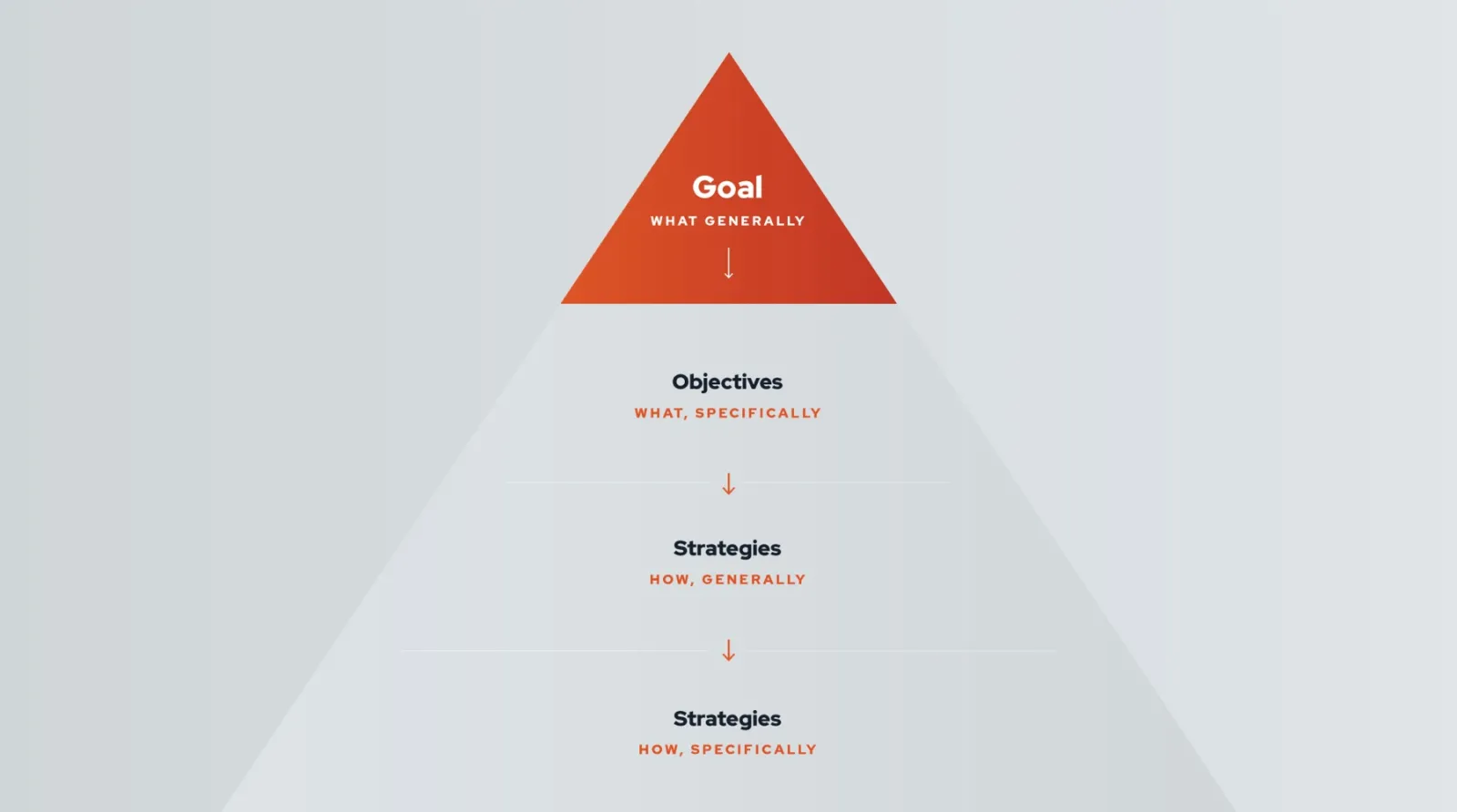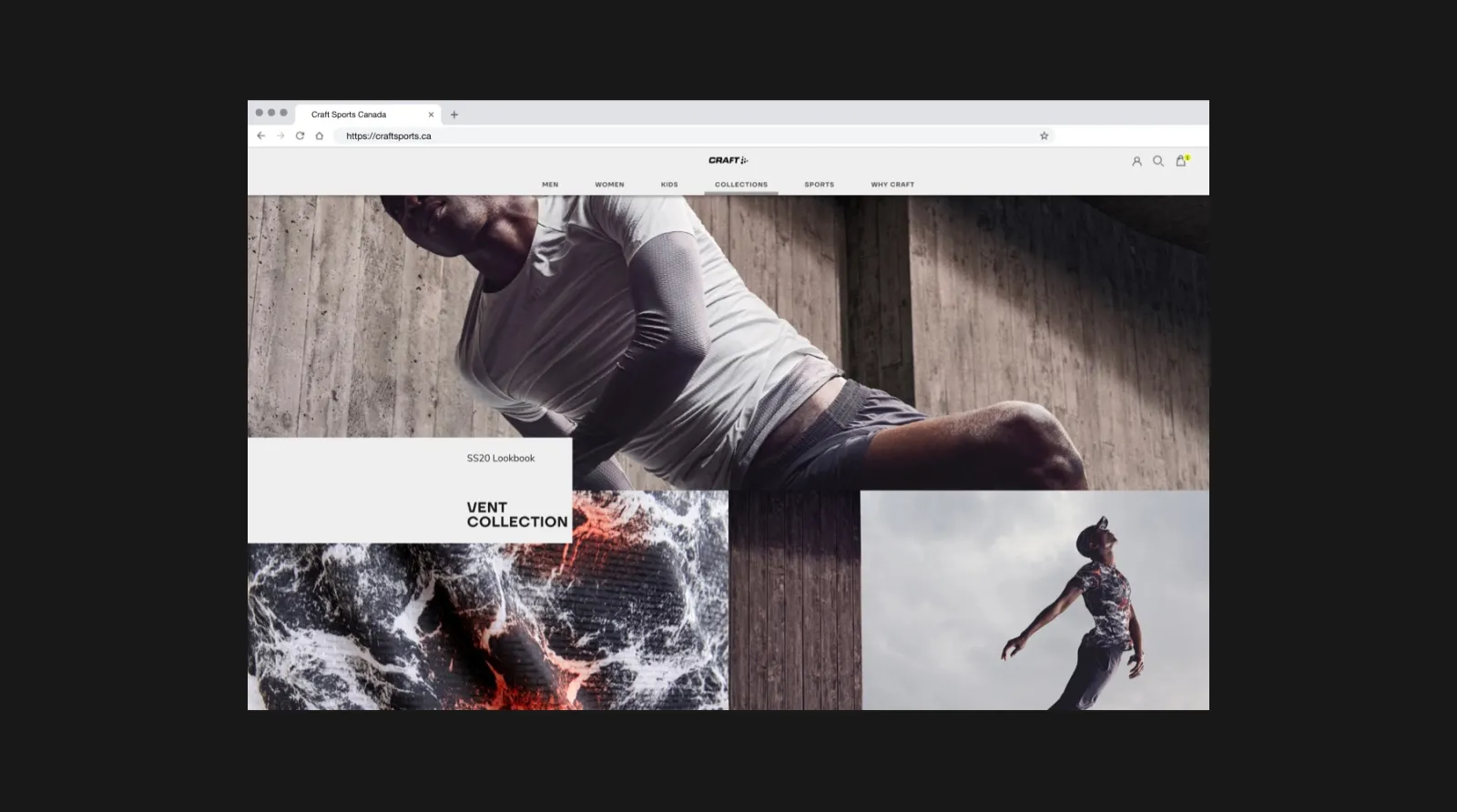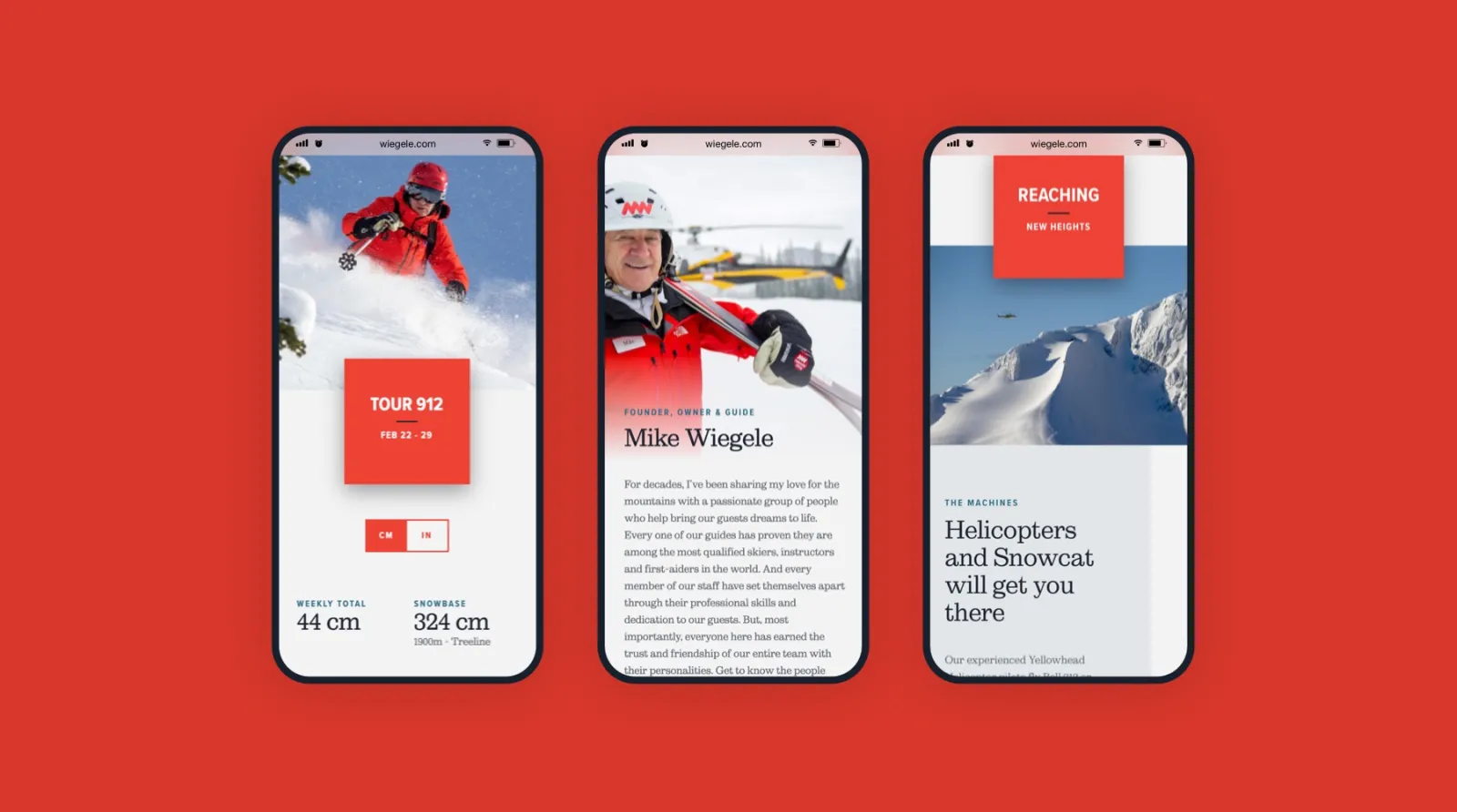Rebuilding your website? Start with goals and objectives: 2021 Edition
Starting a website redesign or rebuild is exciting. It’s an opportunity to fix those annoying bugs that have been irking you for months; to freshen up the look and feel; to add that shiny new piece of functionality you’ve been eyeing up.
But a new website is a big investment—both in time and money—and for it to make good business sense, it needs to be undertaken with a strong strategic foundation that’s directly tied into your business goals and objectives. Sure, refreshing design and adding new functionality is nice, but how does it directly drive ROI?
Goals, objectives, strategies and tactics
At Origin, we use a strategic planning framework commonly referred to as G.O.S.T (Goals, Objectives, Strategies and Tactics). One of the strengths of this framework is its adaptability— that it’s robust enough to be used to develop a three-year strategic plan for a business and tangible enough to apply to a specific project like a website redesign.
Within this framework we define goals as big, sometimes broad, desired outcomes you hope to achieve at some point in the future. For example:
- become the leading brand in your industry
- grow to a $100m business
- increase visits to your destination
- increase brand awareness
- grow your social media following
Objectives are defined as specific and measurable outcomes, bound by a timeframe, that will indicate progress on those goals:
- Increase market share by 10% in FY2017
- Drive $50m in revenue during Q2
- Achieve 500,000 visits in the 2017.18 season
- Gain 30% increase in brand recall during the campaign period
- Reach 100k Facebook fans by the end of the year
When you choose an agency to work with on a web project, you should expect them to recommend strategies and tactics (how you’ll achieve your goals and objectives), but in order to develop the recommended approach they’ll likely be looking for client guidance in the form of goals and objectives.
Adapt your business and marketing goals to the web
It goes without saying that a website is just a single channel in a larger marketing ecosystem. On its own, it’s unlikely to be solely capable of achieving your broad business goals (unless, perhaps, you’re strictly an online business). To understand how the website fits into the bigger picture, it can be helpful to adapt your business and marketing goals to web-specific goals that are tangible and bound by the realities of what a website can and cannot achieve.
Marketing goal > Corresponding website goal
- Reach a new market or audience segment > Increase new visits from specific segments or markets
- Improve brand understanding > Increase engagement with brand content
- Generate more marketing leads > Increase CRM database/newsletter signups
- Drive more online sales/bookings > Increase conversion rate
Top, mid and bottom of the funnel goals
Another way of thinking we often find helpful when setting goals is to differentiate between goals that exist at the top of the funnel vs. mid to bottom of the funnel. At the top of the funnel (dreaming/inspiration/brand awareness) these goals are more likely to focus on generating new leads and influencing the customer’s perception of the brand, for example:
- Increase new visitors from a specific market segment
- Reduce our bounce rate
- Increase CRM/database signups
- Increase engagement with brand content
Mid to bottom of the funnel and goals are more likely to focus on driving the consumer through the funnel and delivering a business result, for example:
- Create a smooth user experience and path to purchase
- Increase our online sales/booking conversion rate
- Reduce cart abandonment
Translating goals into objectives
Once you’ve adapted your business and marketing goals to website goals, the next step is to translate them into specific and measurable objectives. This step can vary in difficulty depending on how tangible your goals are, and how easily you can attribute specific metrics to them. Doing so is a step your agency should help you with, as experience and expertise with analytics and other data sources is critical to finding the right metric, and sometimes specific strategies and tactics can lead to metrics you might not think of. But as long as you’ve done the homework to prepare sound and thoughtful goals, measurable objectives should come naturally.
Website goal > Corresponding objective
- Increase new visits from specific segments or markets> 20% increase in new visitors from X, Y and Z international markets by 20% before end of Q4
- Increase engagement with brand content > Achieve 50k views of our brand video on the homepage by April
- Increase CRM database/newsletter signups > Generate 20k new newsletter signups before December
- Increase conversion rate > Increase the conversion rate on our packages page to 5% between April and September
Watch out for common traps
There are a handful of common traps that are easy to fall into when setting website goals and objectives. Be weary of these things when planning:
- The “If we build it, they will come” fallacy - unfortunately the Field of Dreams approach to building websites is a guaranteed way to fail. Rebuilding your website alone is unlikely to have an instantaneous effect on brand awareness that translates to more site visitors. There are strategies and tactics that can be employed during a rebuild to drive traffic (SEO, content marketing, and others) but if this is your goal, make sure you are willing to explore the marketing requirements (and have a budget) above and beyond the website rebuild required to achieve it.
- Shiny new object distractions - most of us who work in marketing are guilty of being attracted to the next new app or a cool new map interface we saw on another website, but “integrate Google Earth into the website” is not a website goal, it’s a tactic. If you’ve got an idea for functionality or content don’t be afraid to share it - just be sure to connect it back to a website goal that drives a business result.
- Rebranding within the scope of the website - it’s true that your website is a great opportunity to freshen up the look and feel of your brand, but a common mistake is to neglect to plan for the far-reaching implications of redefining your brand creative during a website redesign. Rebranding is a much larger scope than a website redesign can support, and while the website can often be a great catalyst to explore new brand creative, if that’s your goal ensure you’re ready to continue with the creative refresh across all your brand and marketing materials once the website project is complete.
- Set it and forget it - the last, yet arguably most important point to make regarding website goals and objectives is that a website is an ever evolving platform. The reason we set measurable objectives is so that we can measure, analyse and evolve over time. The most important consideration here is to dedicate a budget for monitoring and enhancement over the life of the website.
And, finally, if you are planning to go to RFP for your website redesign, please do us a favour and read this short how to.
Origin Outside offers unique creative services and innovative digital marketing strategies to tourism and outdoor sports-based businesses. For more information, please contact us online.
We also offer a monthly newsletter called “Insights on The Outdoors” to keep you abreast of the latest in news and fashion. To subscribe, visit https://www.originoutside.com/newsletter.






